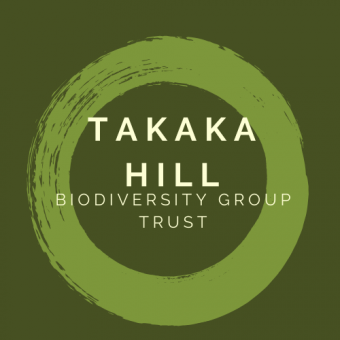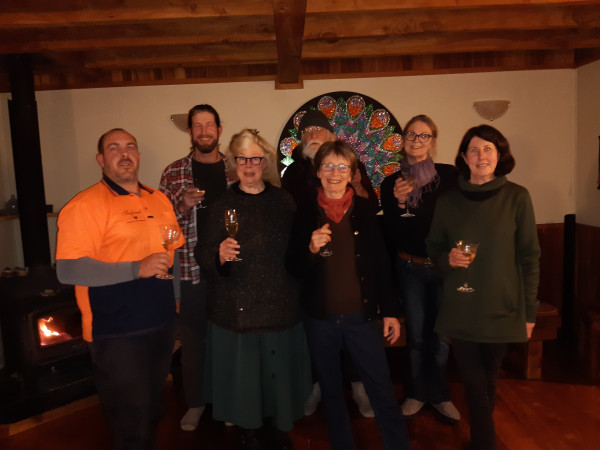
(Takaka Hill Biodiversity Group - media release 30 July 2021)
Takaka Hill Biodiversity Group Trust members were delighted in July 2021 to receive a second National Wilding Conifer Control Programme Community Partnership Project grant to continue and extend their work controlling wilding pines on Takaka Hill. This time the grant is for $250,000 - enough to fund the Trusts Community Partnership Project through to 2023.
A first grant received in 2020, saw the first phase of the project off the ground, controlling 8,200 wilding pines by July 2021.
“In part,” explains the Trust's Project Manager, Charmaine Petereit, “It will be more of the same including new landowners who have come on board with the project. Building on last year’s efforts, we now begin a multi-phase operation that includes helping DOC manage wilding pines on neighbouring public conservation land on the Hill.”
“Not all the land on Takaka Hill can be approached in the same way. It depends on how their wilding pines presence has developed.”
There is a patchwork of land uses on Takaka Hill. On working farms and quarries, old-man pines work as windbreaks, embankment support for tracks, and woodlots. These stay for now, so the Trust's work is to carry on controlling the wilding pines, until we can pass back a manageable program of control to landowners - with a little ongoing help from the Trust.
Other sections, including both 1960s and '70s 'back to the land' properties and 'retired blocks' on farms, have native vegetation that has been encouraged to regenerate. Here, the Trust's control project treats any re-infesting wilding pines, and lets the first and second wave of returning natives regenerate. Where needed, landowners have locally-sourced native plants propagated by the Trust, for planting out.
A third, more intensive part of the project is stopping wilding pine regeneration on land no longer allocated to plantation forest. 'We have new landowners, keen to re-establish native shrubland and forest on land that once held private conifer plantations,' explains Charmaine. 'This is a big transition - and the Trust will use part of this funding to help, making sure the opened canopy reverts to natives, and doesn't just re-germinate wilding pines.'
With a section of these grants reserved for survey work, landowners are also helped by our wilding pines contractors Kaitiaki O Ngahere who also specialize in native habitat restoration, to learn more about what native species their land-type is suited to, and what it already contains.
The Trust's "all-of-terrain" approach is crucial here, explains Kaitiaki ecologist Zac Milner. “There's little point in just taking out wilding pines, without knowing what happens next. In part, the land itself will tell you what it's likely to do - but sometimes it might need help. The more we understand about how these complex limestone/marble karst lands behave, the better we can handle the return of a healthy indigenous ecosystem.”
That's why the Trust's wilding conifer program uses stem herbicide drill-and-fill, rather than foliar herbicide broad-scale by helicopter to protect the native regeneration already there and help the under-canopy species that will re-establish.
Takaka Hill plays a vital role in water catchment with flows on both side of the hill to the Riuwaka Resurgence on the Kahurangi side and the Gorge Creek Resurgence before it enters the Takaka Aquifer on the Canaan side. Wilding pine control needs to consider possible flow-on impacts, minimising harm.

Left to Right: Stefan Heinrich (Treasurer), Norman Petereit (Secretary), Dr Jackie Cook (Trust Chair), Graeme Helleur (Trustee), Suzie Peacock ( Trust member),Charmaine Petereit (Project Manager), Wendy Henderson (Trustee), celebrating the Trusts successful application
“Well we don't stop" laughs Trust Project Manager Charmaine. “This is what we call our ‘heavy-lifting’ moment. It's the phase where we need professional help and expensive project-work. Then, we revert to self-management, with the occasional, smaller, specialist intervention.”
No matter the phase of the operation, it's the community-led planning and management which counts. Having trusted access to land, both private and public, is the core of the program.
“Here we've been able to bring together urgent remedial funding from MPI, and the personal aspirations landholders have for playing their part in restoring and protecting indigenous biodiversity. Without those two equally important components, this sort of work is impossible.”
For more information visit the Trusts web site https://www.takakahillbiodiversitygroup.nz/ and Face Book Page